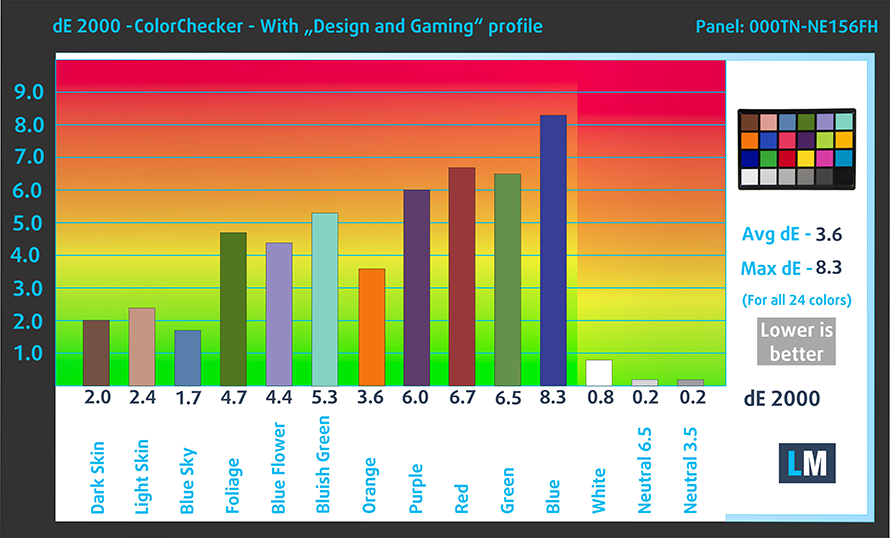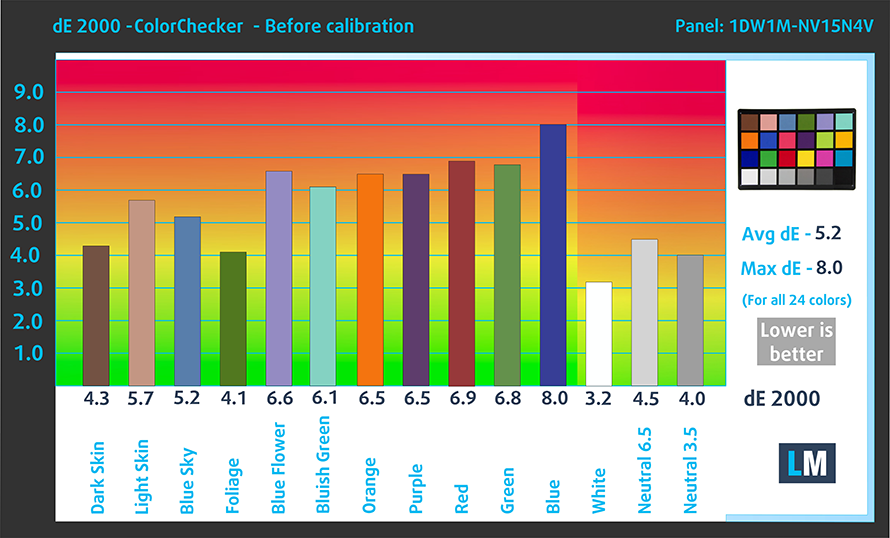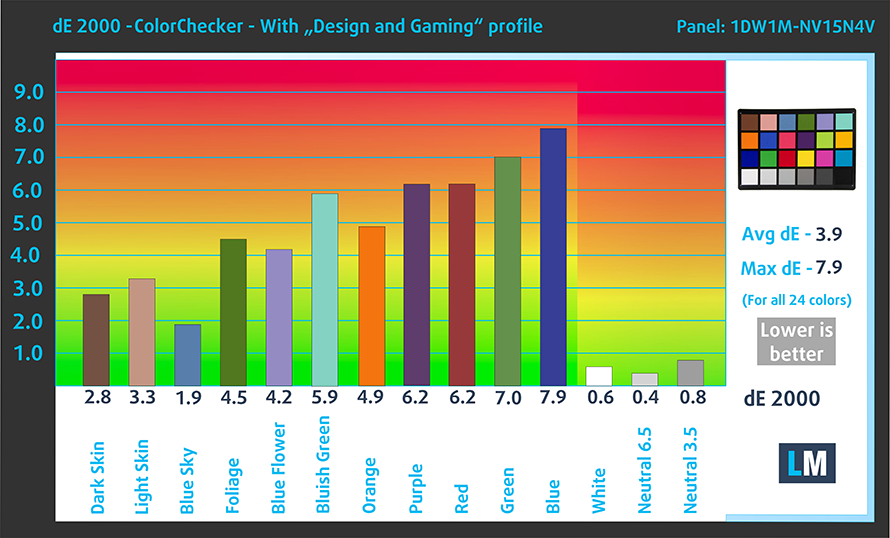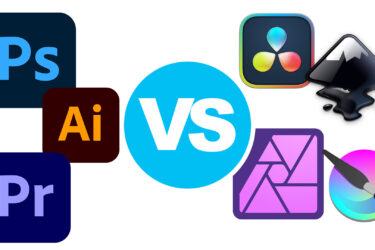[In-Depth Comparison] Dell Latitude 15 3530 vs Dell Latitude 15 5530 – Do you need any extra premiumness?
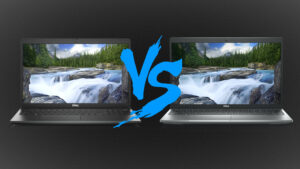 The popular Latitude sub-brand by Dell offers great business laptops divided into four segments. We’ve got the entry-level 3000-series, the mid-range 5000-series, the high-end 7000-series, and the flagship ultra-premium 9000-series.
The popular Latitude sub-brand by Dell offers great business laptops divided into four segments. We’ve got the entry-level 3000-series, the mid-range 5000-series, the high-end 7000-series, and the flagship ultra-premium 9000-series.
Today we’ve got two of the more affordable options, which still have a decent price gap between them. The Latitude 15 3530 is a feature-packed laptop that keeps its cost low by sacrificing some stuff that isn’t deemed essential for the device’s functionality. The Latitude 15 5530 goes out of its way to look a bit better and use better materials, but on the inside, both laptops use the same hardware, so don’t be shocked if they tend to perform equally when it comes time for benchmarks.
Today we’re giving you an in-depth comparison between the Dell Latitude 15 3530 and the Latitude 15 5530.
Dell Latitude 15 3530: Full Specs / In-depth Review
Dell Latitude 15 5530: Full Specs / In-depth Review
Dell Latitude 15 3530 configurations:
Dell Latitude 15 5530 configurations:
Contents
Design and construction
The Latitude 15 3530 comes with a plastic chassis that shows some durability issues, mainly flexing from both the lid and the base. The surface also could have been better, as the finish is rough and easily scratchable. On the other hand, the laptop’s very portable measuring just 18.1 mm and weighing only 1.79 kg. Sadly this also means that the lid doesn’t open with one hand.
The more expensive Latitude 15 5530 also uses plastics but adds carbon fiber to the lid. This way, the build quality feels much nicer, as there’s more resistance from the chassis when we try to twist it. The finish on the whole laptop is way smoother as well, while also not giving in to collecting smudges and fingerprints. Sustainability is becoming a big part of Dell’s image, so it’s no wonder that the laptop comes with 21% bioplastics and 30% recycled plastics. Compared to its more affordable relative, it’s thicker, at 22.15 mm, while being considerably lighter, stopping the scales at 1.59 kg.
 Dell Latitude 15 3530
Dell Latitude 15 3530 Dell Latitude 15 5530
Dell Latitude 15 5530Keyboard and touchpad
The bezel size is very similar, with a base HD webcam, but an optional FHD snapper with an IR sensor for Windows Hello. This is the case for both notebooks. The two Latitudes have a fingerprint reader embedded in the power button.
The keyboard layout is also very similar on the two devices, as well as the typing experience. The more expensive laptop does have slightly loner key travel, but an average consumer will hardly notice the difference. Also, you can configure the laptops to have a backlight. Lastly, the touchpads are similar as well, with a rougher surface, but otherwise accurate tracking and responsiveness.
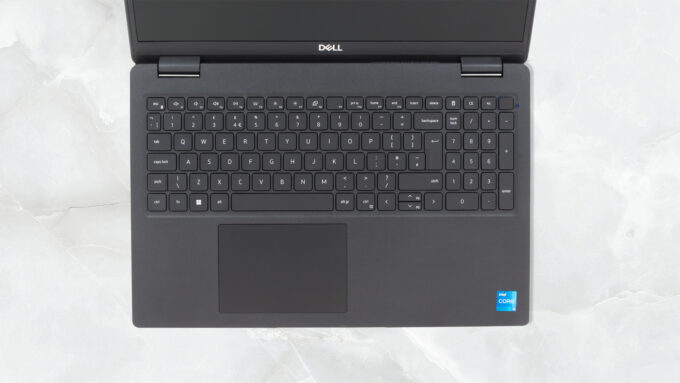 Dell Latitude 15 3530
Dell Latitude 15 3530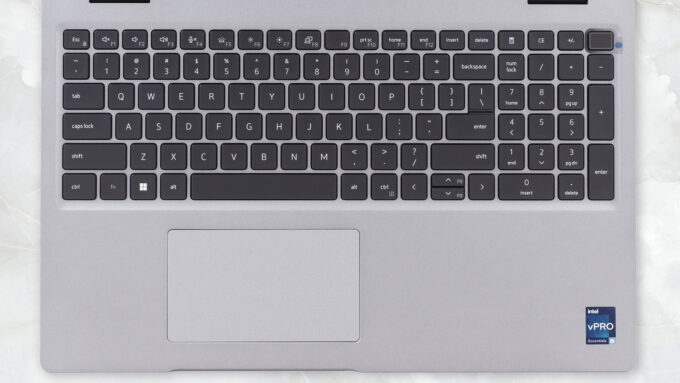 Dell Latitude 15 5530
Dell Latitude 15 5530Ports
The Latitude 15 3530 comes with two UBS Type-A 3.2 (Gen. 1) ports, one UBS Type-A 2.0 port, one USB Type-C 3.2 (Gen. 2) port, an HDMI 1.4b port, a LAN port, a MicroSD card reader, and an optional SIMcard tray.


The Latitude 15 5530 is armed to the teeth, with two Thunderbolt 4 ports, two USB Type-A 3.2 (Gen. 1) ports, an HDMI 2.0 port, a LAN port, a MicroSD card reader, and an audio jack. There’s also an optional SIM card tray as well as a SmartCard reader for extra security.



Disassembly, upgrade options
The Latitude 15 3530 has two SODIMM slots for up to 32GB of DDR4 memory, as well as one M.2 slot for Gen 4 SSDs. The more expensive laptop has the same number of RAM slots but offers an additional M.2 slot, so you don’t have to swap and reinstall the OS as soon as you decide it’s time for a storage upgrade.
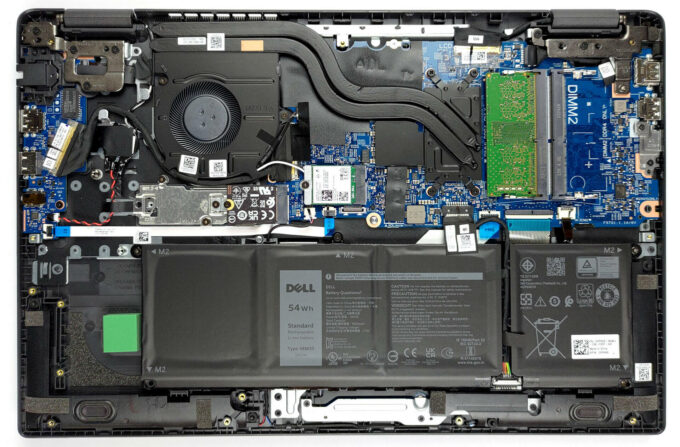 Dell Latitude 15 3530
Dell Latitude 15 3530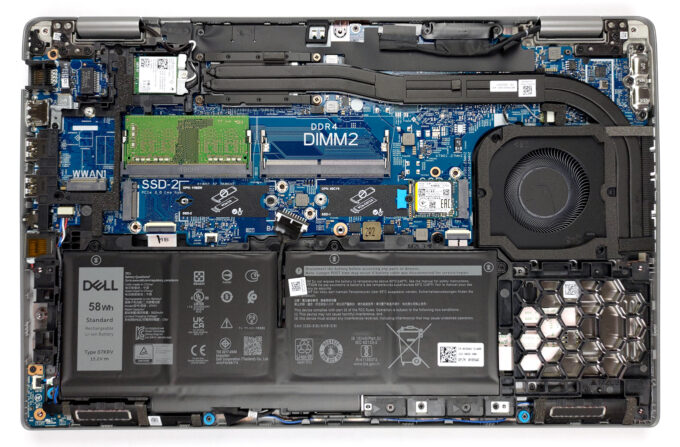 Dell Latitude 15 5530
Dell Latitude 15 5530Spec sheet
Dell Latitude 15 3530 series
- Dimensions
- 361 x 240.95 x 18.06 mm (14.21" x 9.49" x 0.71")
- Weight
- 1.79 kg (3.9 lbs)
- Price
- Not Available
Dell Latitude 15 5530 series
- CPU
- Intel Core i7-1270P #139 in Top CPUsIntel Core i7-1265U #163 in Top CPUsIntel Core i7-1255U #169 in Top CPUsIntel Core i5-1250P #173 in Top CPUsIntel Core i5-1245U #162 in Top CPUsIntel Core i5-1240P #132 in Top CPUsIntel Core i5-1235U #167 in Top CPUsIntel Core i5-1145G7 #206 in Top CPUsIntel Core i3-1215U #199 in Top CPUs
- Dimensions
- 357.80 x 233.30 x 20.77 - 22.15 mm (14.09" x 9.19" x 0.82")
- Weight
- 1.59 kg (3.5 lbs)
- Price
- Starting at $790.77
Display quality
The Latitude 13 3530 comes with two display options, an HD TN panel, and a Full HD IPS panel. The Latitude 15 5530 takes these options, but also adds a 4K UHD IPS display. We tested the FHD IPS panel on both laptops, which comes with a pixel density of 142 PPI, a pitch of 0.18 mm x 0.18 mm, and a Retina distance of 60 cm, from which you can’t distinguish between individual pixels.
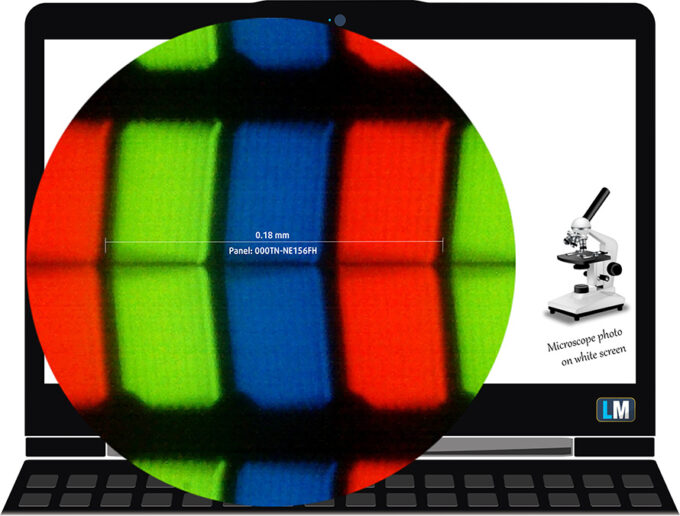 Dell Latitude 15 3530
Dell Latitude 15 3530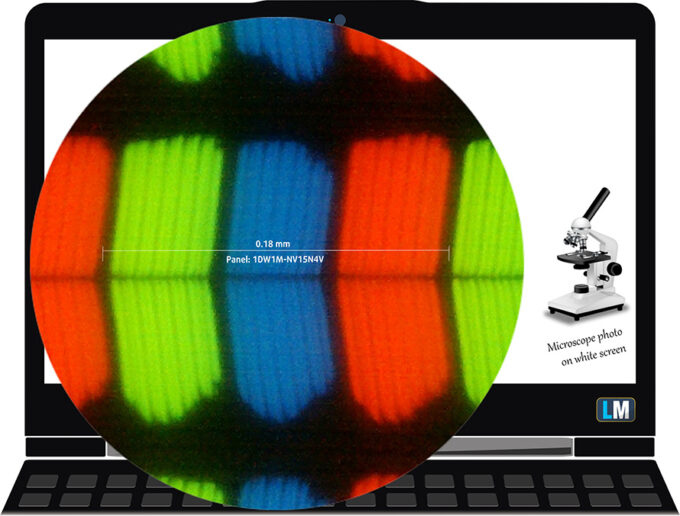 Dell Latitude 15 5530
Dell Latitude 15 5530Both laptops have excellent viewing angles. Here are images at 45 degrees to evaluate quality.
 Dell Latitude 15 3530
Dell Latitude 15 3530
Dell Latitude 15 5530
The two laptops are pretty close in terms of brightness, with 310 nits for the Latitude 3530 and 306 nits for the Latitude 5530. The contrast ratio is similar as well, with 1220:1 for the 3530 and 1240:1 for the 5530.
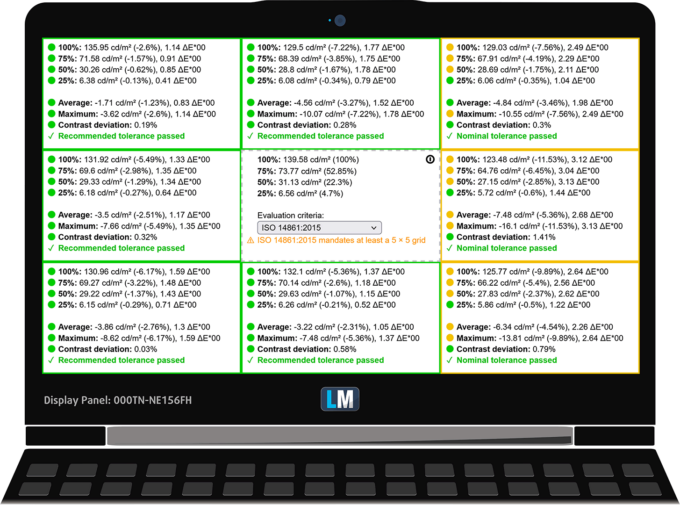 Dell Latitude 15 3530
Dell Latitude 15 3530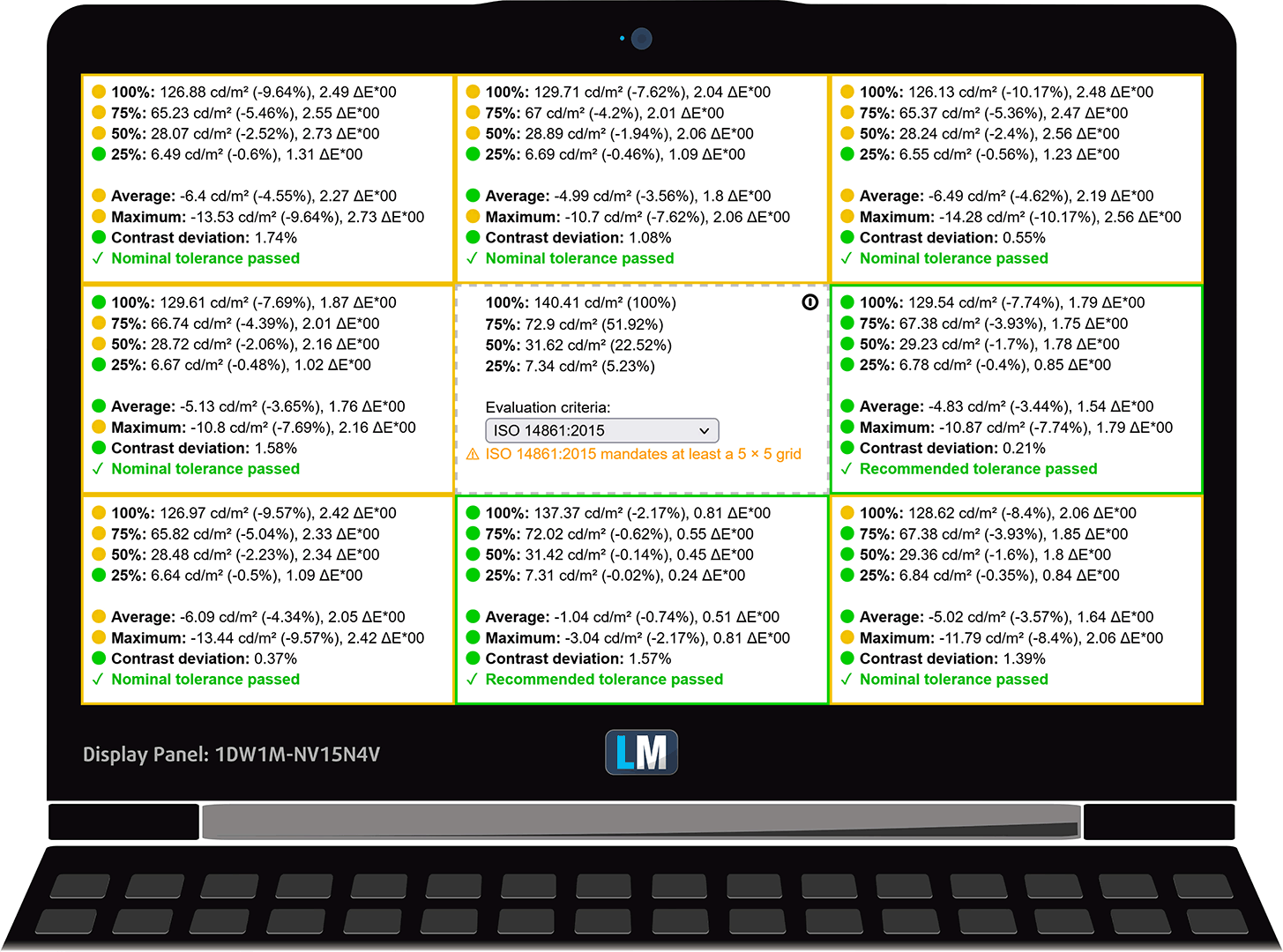 Dell Latitude 15 5530
Dell Latitude 15 5530Color coverage
To make sure we are on the same page, we would like to give you a little introduction to the sRGB color gamut and the Adobe RGB. To start, there’s the CIE 1976 Uniform Chromaticity Diagram that represents the visible specter of colors by the human eye, giving you a better perception of the color gamut coverage and the color accuracy.
Inside the black triangle, you will see the standard color gamut (sRGB) that is being used by millions of people on HDTV and on the web. As for the Adobe RGB, this is used in professional cameras, monitors, etc for printing. Basically, colors inside the black triangle are used by everyone and this is the essential part of the color quality and color accuracy of a mainstream notebook.
Still, we’ve included other color spaces like the famous DCI-P3 standard used by movie studios, as well as the digital UHD Rec.2020 standard. Rec.2020, however, is still a thing of the future and it’s difficult for today’s displays to cover that well. We’ve also included the so-called Michael Pointer gamut, or Pointer’s gamut, which represents the colors that naturally occur around us every day.
The yellow dotted line shows the color coverage of both the Dell Latitude 15 3530 and the Latitude 15 5530, both of which cover around half of the sRGB gamut, with 53% for the 3530 and 50% for the 5530.
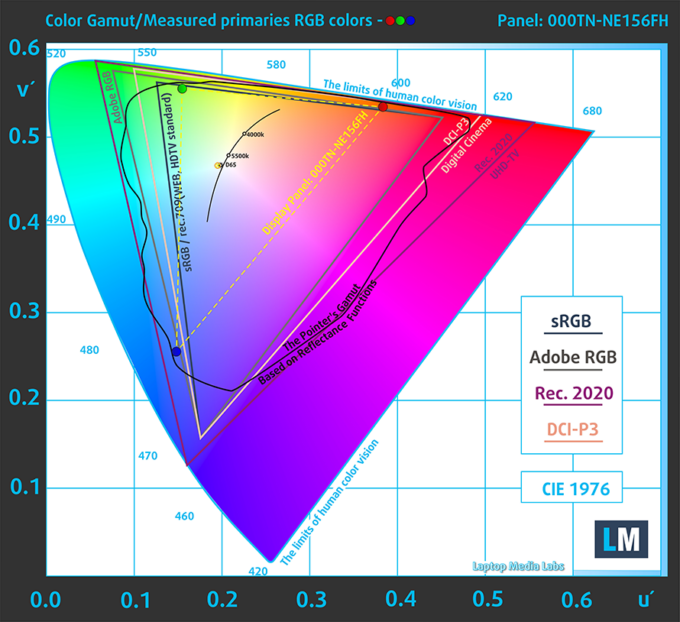 Dell Latitude 15 3530
Dell Latitude 15 3530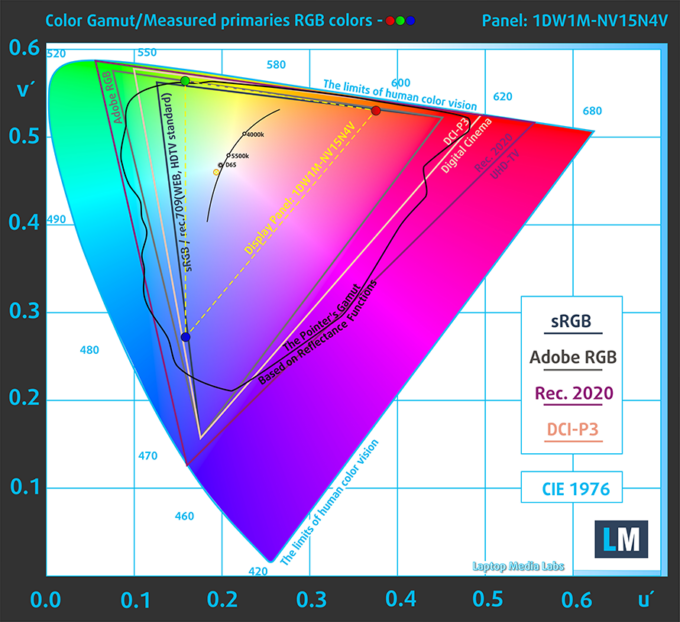 Dell Latitude 15 5530
Dell Latitude 15 5530Color accuracy
We tested the accuracy of the display with 24 commonly used colors like light and dark human skin, blue sky, green grass, orange, etc. You can check out the results in factory condition and also, with the “Design and Gaming” profile.
Below you can check the results from the test of both laptops, with both the factory settings (left) and with our “Design and Gaming” profile applied (right).
Both laptops don’t get accurate enough to be used for professional design work.
Dell Latitude 15 3530
Dell Latitude 15 5530
Response time (Gaming capabilities)
We test the reaction time of the pixels with the usual “black-to-white” and “white-to-black” method from 10% to 90% and vice versa.
Both laptops have the same Fall + Rise time of 17.1 ms.
 Dell Latitude 15 3530
Dell Latitude 15 3530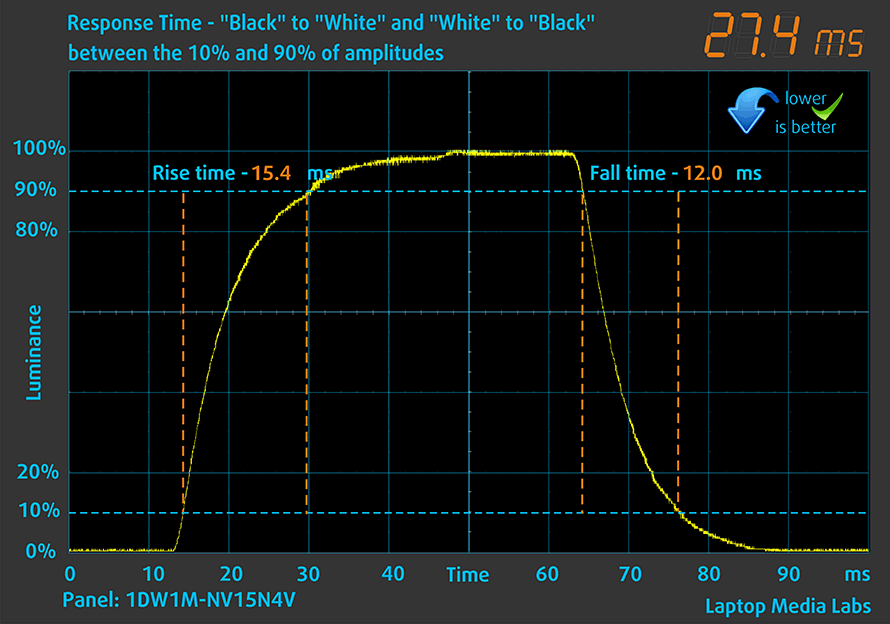 Dell Latitude 15 5530
Dell Latitude 15 5530Health impact – PWM / Blue light
PWM – Screen flickering
Pulse-width modulation (PWM) is an easy way to control monitor brightness. When you lower the brightness, the light intensity of the backlight is not lowered, but instead turned off and on by the electronics with a frequency indistinguishable to the human eye. In these light impulses, the light/no-light time ratio varies, while brightness remains unchanged, which is harmful to your eyes. You can read more about that in our dedicated article on PWM.
Both laptops show no PWM usage across all brightness levels.
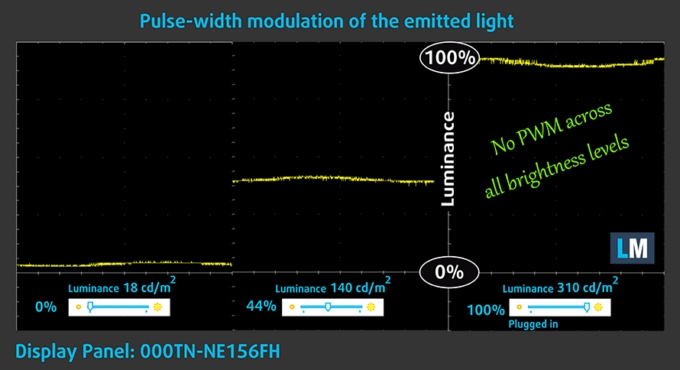 Dell Latitude 15 3530
Dell Latitude 15 3530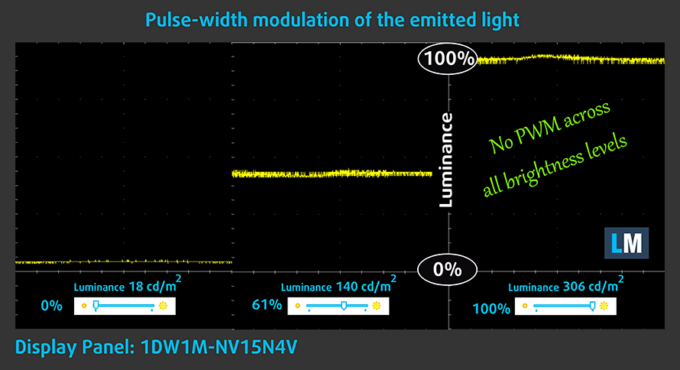 Dell Latitude 15 5530
Dell Latitude 15 5530Blue light emissions
Installing our Health-Guard profile not only eliminates PWM but also reduces the harmful Blue Light emissions while keeping the colors of the screen perceptually accurate. If you’re not familiar with Blue light, the TL;DR version is – emissions that negatively affect your eyes, skin, and your whole body. You can find more information about that in our dedicated article on Blue Light.
Buy our profiles
Dell Latitude 15 3530 15.6″ FHD IPS BOE 000TN-NE156FH (BOE0A89): Buy our profiles
Dell Latitude 15 5530 15.6″ FHD IPS BOE 1DW1M-NV15N4V (BOE0A86): Buy our profiles
Sound
Both laptops have their speakers on the bottom and produce good audio with decent volume. However, the Latitude 15 5530 shows deviations across the entire frequency range, while the Latitude 15 3530 does not.
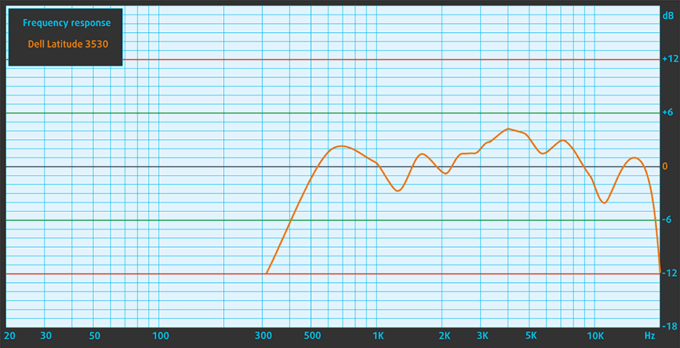 Dell Latitude 15 3530
Dell Latitude 15 3530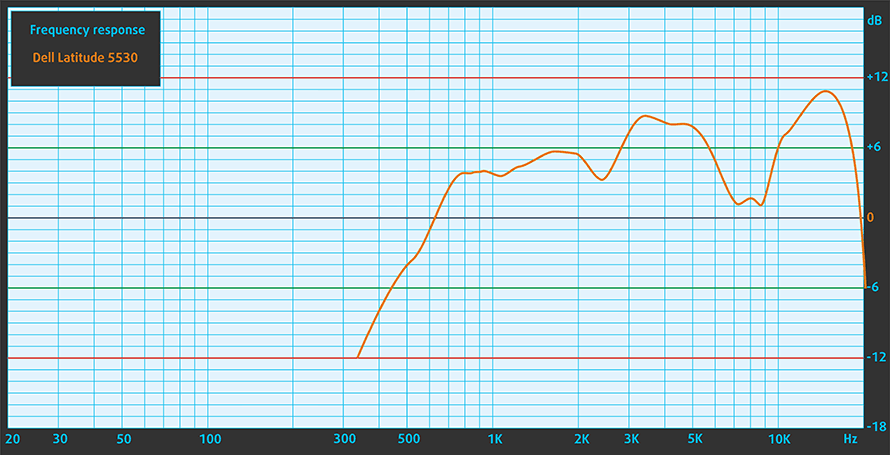 Dell Latitude 15 5530
Dell Latitude 15 5530Battery
While offering a smaller 54Wh battery pack, the Latitude 15 3530 makes gains both in web browsing and video playback, lasting for 50 minutes and 30 minutes more, respectively. All of our tests use the Windows Better performance setting turned on, screen brightness adjusted to 120 nits, and all other programs turned off except for the one we are testing the notebook with.
In order to simulate real-life conditions, we used our own script for automatic web browsing through over 70 websites.

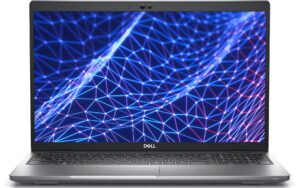
For every test like this, we use the same video in HD.


Performance
Both laptops carry the Alder Lake U-series, while the Latitude 15 5530 also offers the P-series, which has a lot more power and higher TDPs. In terms of graphics, there are only integrated options, which will certainly do fine inside these machines.
CPU benchmarks
Here we tested the Core i5-1235U inside both machines. Interestingly, the chip inside the more affordable laptop has 14% more performance in the Cinebench R23 benchmark, which tests the 3D Rendering capabilities of the CPU. Moving to photoshop, the Latitude 15 5530 is quite quicker, finishing with a lead of 1.4 seconds.
Results are from the Cinebench R23 CPU test (the higher the score, the better)
Results are from our Photoshop benchmark test (the lower the score, the better)
GPU benchmarks
Here we tested the Iris Xe Graphics G7 with 80 Execution Units inside both laptops. The Latitude 15 5530 shows more performance in all four benchmarks that we use for testing, with leads of 51%, 76%, 96%, and 59% in 3DMark Time Spy, Wild, Life, Fire Strike, and Unigine Superposition, respectively.
Results are from the 3DMark: Time Spy (Graphics) benchmark (higher the score, the better)
Results are from the 3DMark: Fire Strike (Graphics) benchmark (higher the score, the better)
Results are from the 3DMark: Wild Life benchmark (higher the score, the better)
Results are from the Unigine Superposition benchmark (higher the score, the better)
Gaming tests
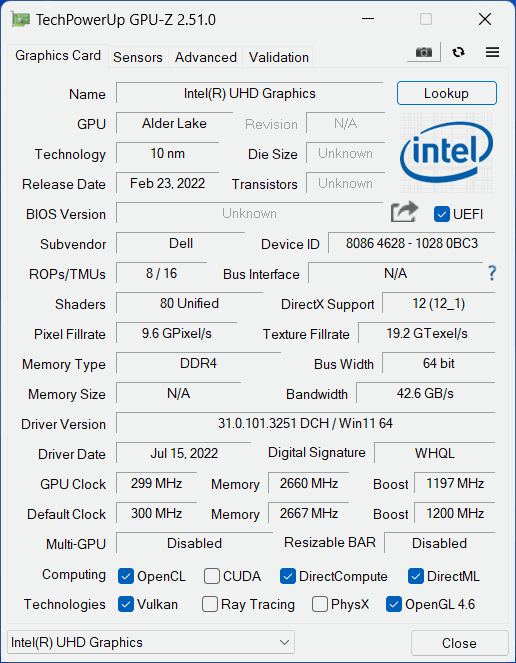 Dell Latitude 15 3530
Dell Latitude 15 3530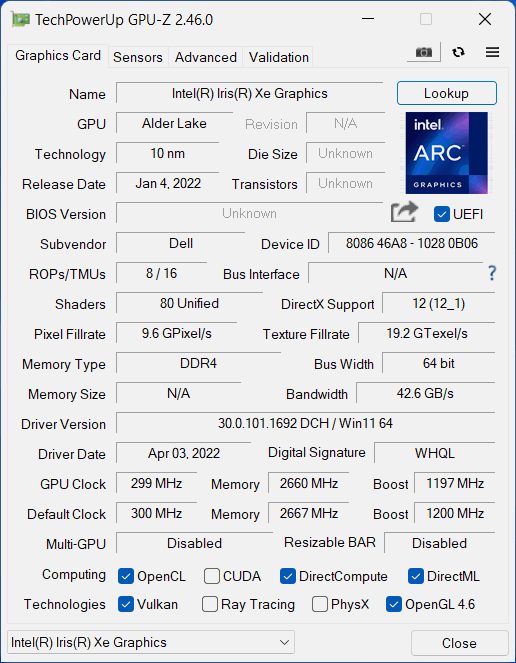 Dell Latitude 15 5530
Dell Latitude 15 5530
| CS:GO | HD 1080p, Low (Check settings) | HD 1080p, Medium (Check settings) | HD 1080p, MAX (Check settings) |
|---|---|---|---|
| Dell Latitude 15 3530 – Iris Xe Graphics G7 (80EU) | 59 fps | 50 fps | 26 fps |
| Dell Latitude 15 5530 – Iris Xe Graphics G7 (80EU) | 123 fps (+108%) | 88 fps (+76%) | 55 fps (+120%) |

| DOTA 2 | HD 1080p, Low (Check settings) | HD 1080p, Normal (Check settings) | HD 1080p, High (Check settings) |
|---|---|---|---|
| Dell Latitude 15 3530 – Iris Xe Graphics G7 (80EU) | 69 fps | 43 fps | 24 fps |
| Dell Latitude 15 5530 – Iris Xe Graphics G7 (80EU) | 130 fps (+88%) | 86 fps (+100%) | 51 fps (+113%) |
Temperatures and comfort
In terms of cooling, both laptops employ a setup with two heat pipes and one fan, which is totally fine for a 15W CPU and no dedicated graphics.
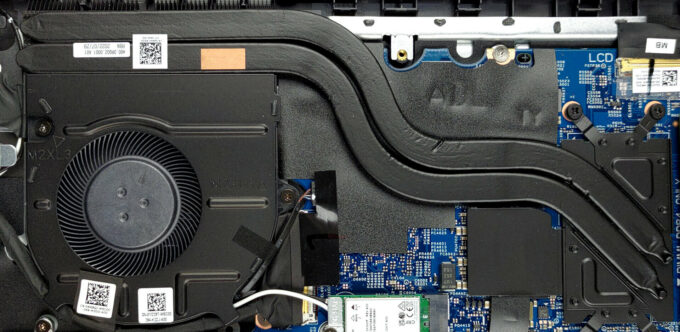 Dell Latitude 15 3530
Dell Latitude 15 3530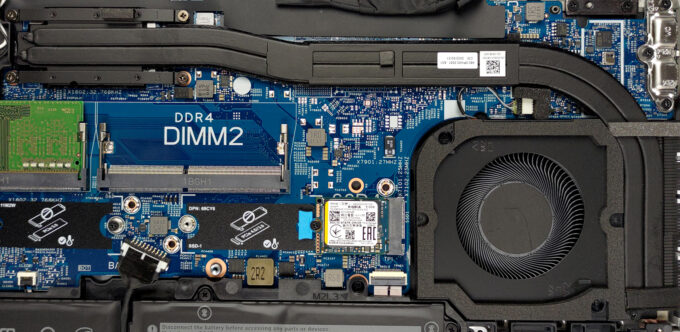 Dell Latitude 15 5530
Dell Latitude 15 5530Max CPU load
| Intel Core i5-1235U (15W TDP) | 0:02 – 0:10 sec | 0:15 – 0:30 sec | 10:00 – 15:00 min |
|---|---|---|---|
| Dell Latitude 15 3530 | 2.97 GHz @ 2.60 GHz @ 87°C @ 34W | 2.64 GHz @ 2.43 GHz @ 88°C @ 30W | 2.37 GHz @ 2.29 GHz @ 80°C @ 25W |
| Dell Latitude 15 5530 | 3.57 GHz @ 3.02 GHz @ 94°C @ 52W | 2.03 GHz @ 2.09 GHz @ 76°C @ 21W | 2.24 GHz @ 2.19 GHz @ 64°C @ 23W |
The Latitude 15 5530 reached a much higher clock speed in the first stage of our stress test, however, it also sees much lower drops in the second stage. That’s why we see higher 3D Rendering performance from the Latitude 15 3530, which sustains higher clock speeds in the long run. On the other hand, the more expensive laptop runs way cooler.
Comfort during full load
The Latitude 15 3530 is slightly hotter than its more premium brother, however, however, it’s still not hot enough to be considered uncomfortable. As for noise, both laptops remain quiet even under full load.
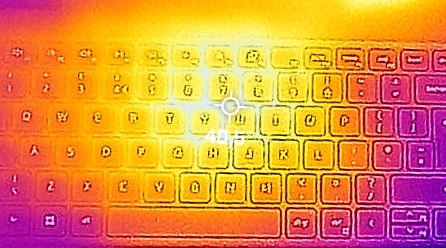 Dell Latitude 15 3530
Dell Latitude 15 3530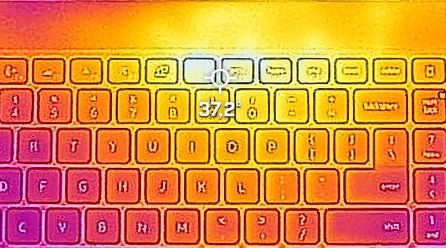 Dell Latitude 15 5530
Dell Latitude 15 5530Verdict
There isn’t a lot that separates the Latitude 15 3530 and the Latitude 15 5530, except for the design, with the 5530 offering much better looks and slightly more durability. Otherwise, the keyboards and touchpads are the same, as well as the webcam options and additional sensors. The port selection of the Dell Latitude 15 5530 is quite better, with Thunderbolt 4 support and faster USB ports. It also comes with a better HDMI connection, so you can connect to more and better external displays. In terms of upgradeability, the 5530 also wins out, with one more SSD slot.
The Latitude 15 5530 also offers a better display selection, if you’re willing to pay for it. The 4K UHD display that’s available has 400 nits of brightness and 100% sRGB coverage, however, it needs considerable power and will drain more battery.
Performance and battery life are kind of equal, as the Latitude 15 3530 lasts longer in our tests, but not by that much, while also showing a higher score in 3D Rendering with Cinebench R23. Where the Latitude 15 5530 shines is with the performance of its iGPU, as despite sharing the same CPU and graphics, we see a boatload of extra performance in both GPU benchmarks and in games. Cooling is great on the two devices, as the chips are kept well-performing and cool, while the laptops themselves are quiet and comfortable, with low base temperatures.
If available for the same price, the choice is obvious, as the Latitude 15 5530 has better features and a more appealing design. If however, there is a big price difference between the two, and you’re on the lookout for the best possible deal, then the Latitude 15 3530 will serve you just as well.
Why choose the Dell Latitude 15 3530?
- Longer Battery life
- More 3D Rendering performance
- Speakers show no deviations across all frequencies
Why choose the Dell Latitude 15 5530?
- Better design
- More populated I/O
- More GPU performance
Dell Latitude 15 3530: Full Specs / In-depth Review
Dell Latitude 15 5530: Full Specs / In-depth Review
Dell Latitude 15 3530 configurations:
Dell Latitude 15 5530 configurations:

